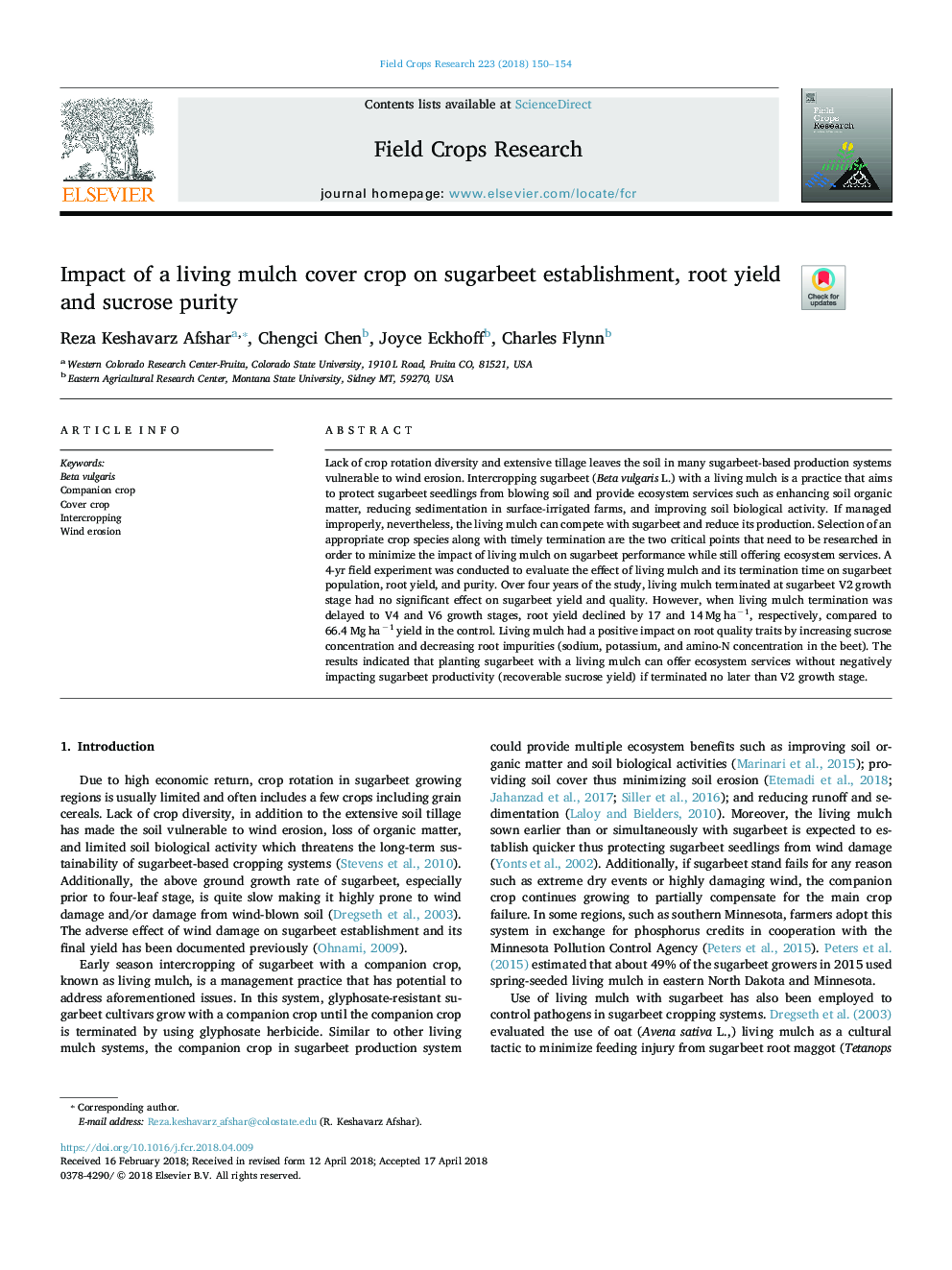| Article ID | Journal | Published Year | Pages | File Type |
|---|---|---|---|---|
| 8879164 | Field Crops Research | 2018 | 5 Pages |
Abstract
Lack of crop rotation diversity and extensive tillage leaves the soil in many sugarbeet-based production systems vulnerable to wind erosion. Intercropping sugarbeet (Beta vulgaris L.) with a living mulch is a practice that aims to protect sugarbeet seedlings from blowing soil and provide ecosystem services such as enhancing soil organic matter, reducing sedimentation in surface-irrigated farms, and improving soil biological activity. If managed improperly, nevertheless, the living mulch can compete with sugarbeet and reduce its production. Selection of an appropriate crop species along with timely termination are the two critical points that need to be researched in order to minimize the impact of living mulch on sugarbeet performance while still offering ecosystem services. A 4-yr field experiment was conducted to evaluate the effect of living mulch and its termination time on sugarbeet population, root yield, and purity. Over four years of the study, living mulch terminated at sugarbeet V2 growth stage had no significant effect on sugarbeet yield and quality. However, when living mulch termination was delayed to V4 and V6 growth stages, root yield declined by 17 and 14â¯Mgâ¯haâ1, respectively, compared to 66.4â¯Mgâ¯haâ1 yield in the control. Living mulch had a positive impact on root quality traits by increasing sucrose concentration and decreasing root impurities (sodium, potassium, and amino-N concentration in the beet). The results indicated that planting sugarbeet with a living mulch can offer ecosystem services without negatively impacting sugarbeet productivity (recoverable sucrose yield) if terminated no later than V2 growth stage.
Related Topics
Life Sciences
Agricultural and Biological Sciences
Agronomy and Crop Science
Authors
Reza Keshavarz Afshar, Chengci Chen, Joyce Eckhoff, Charles Flynn,
